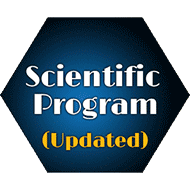
Hamid Abrishami Moghaddam
Professor, University of Picardie, Amiens, France
Title: Neonatal Head Modeling Using MR and CT images
Biography
Biography: Hamid Abrishami Moghaddam
Abstract
Statement of the Problem: Construction of a realistic neonatal head model including bone, fontanels, sutures and soft tissues using medical imagery is important for many applications. For example, solving inverse problems for source localization in electro/magnetoencephalo-graphy requires 3D geometry of principal structures of the head. Moreover, most of the longitudinal morphological and functional studies of neonatal cerebral development need standard head models for inter-individual comparison and structural development analysis. Principally, cranial hard tissues are visible in CT scans, while cerebral soft tissues are mostly visible in MR images. Therefore, a multimodal approach is indispensable for creating a complete neonatal head model including hard and soft tissues. The purpose of this retrospective study is to create a bimodal MR-CT head atlas including hard/soft tissues for the neonates of 39-42 weeks gestational age (GA). Methodology & Theoretical Orientation: Neonatal bimodal MR-CT atlas creation is comprised of two crucial steps (Fig. 1): 1) development of an effective two-step intensity-based intermodality intersubject registration method to align neonatal CT data with the MR template, 2) construction of a neonatal CT template using an advanced groupwise registration and template building method. The registration step is performed first on intracranial tissues and then the resulted deformation field is extended to the remaining parts. Findings: The created bimodal neonatal head atlas is the only available for neurological and structural studies on neonates of 39-42 weeks GA (Fig. 2). Visual investigation and mutual information between MR and CT templates demonstrated their fully alignment. Moreover, their performance on normalizing test subjects was superior to already available individual neonatal MR or CT atlases. Finally, skull segmentation using the created skull probabilistic model (Fig. 3) proved its potential application in hard tissue segmentation from MR data. Conclusion & Significance: Bimodal atlases using MR and CT for neonates in narrow interval age ranges provide morphological details of hard and soft tissues in the same stereotaxic space. They help to construct more realistic models of hard/soft head tissues in neonates for neurological studies.

